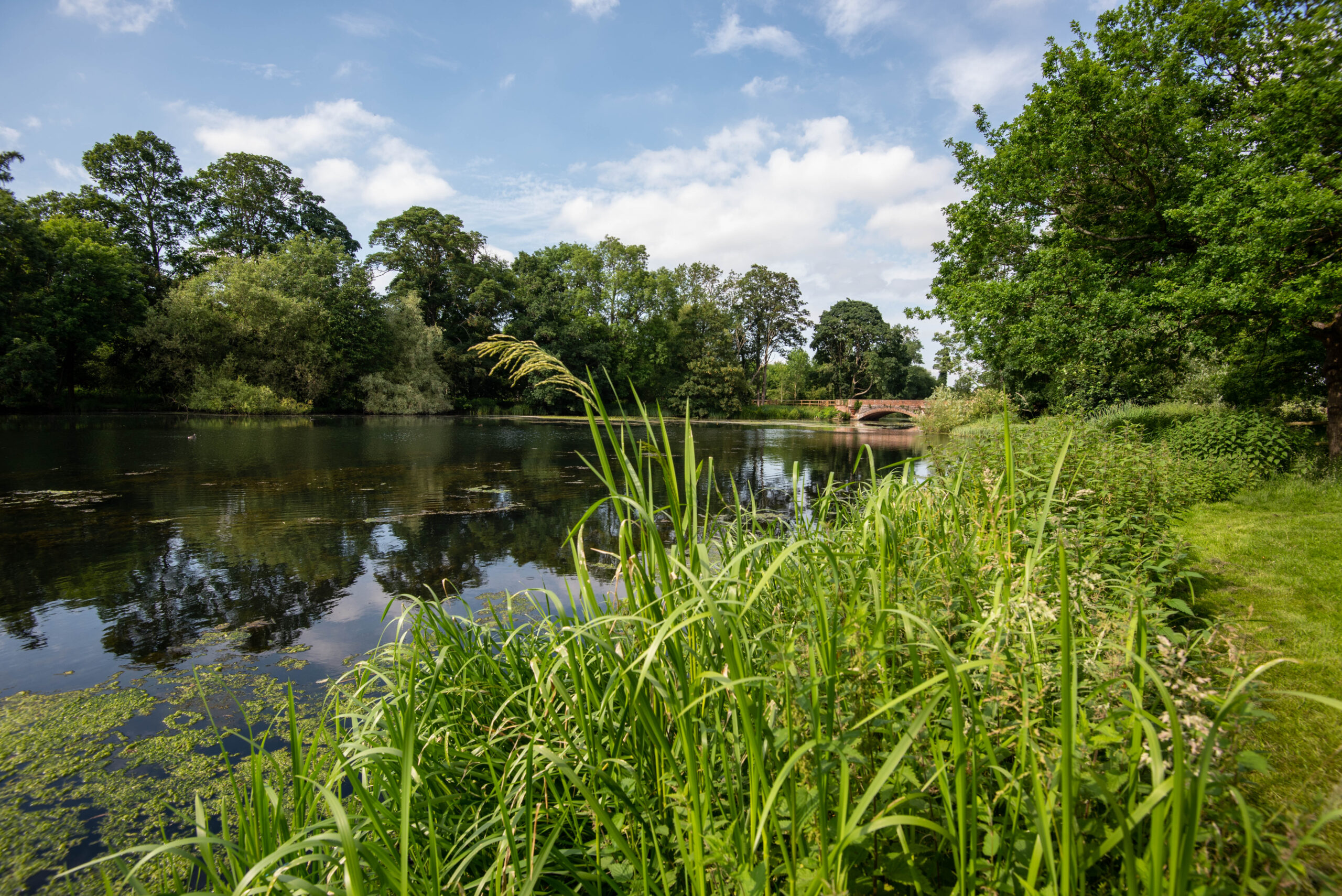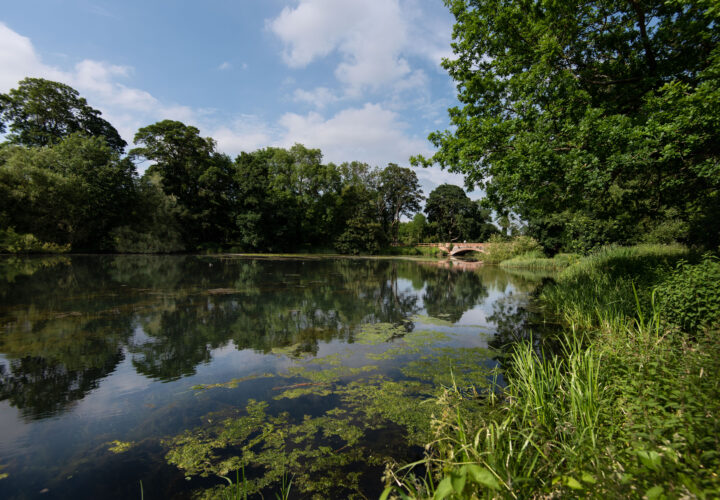The history of The Broadwater
Where the River Lee flows through Hatfield Park it is widened to form The Broadwater, although it is not known when this name was first used. The widening of the river was achieved by building a dam downstream at the eastern end, just above The Saw Mill, where the river leaves Hatfield Park. There was a corn mill on this site in the 15th century, which was burned down in the winter of 1830/31 and subsequently rebuilt. The Estate Saw Mill, now a thriving commercial property, was added next to it between 1838 and 1840.
The purpose of widening the river was to create an ornamental lake. The same method was practised three miles upstream in Brocket Park in the 18th century, where it is also known, as The Broadwater and further upstream where the River Lee flows through the park of Luton Hoo. The river was also widened in the same way in the 20th century, just one and a half miles upstream from Hatfield Park, to create Stanborough Lakes.
It is not known when the widening was carried out to create the Broadwater in Hatfield Park. It had certainly been created by 1785, when it is shown on a map of the Park. It is also featured in a drawing by John Charnock, of about the same date, in which a boat containing six people is shown rowing downriver, past a large marquee. This is reminiscent of a scene described on page 190 by Lord David Cecil in The Cecils of Hatfield House (1973):
“On Sundays in summer the Park was thrown wide open to admit the people of the place so that they might listen to Lady Salisbury’s band playing on the terrace; or, to vary the entertainment, the band would play on the banks of the River Lea at the north end of the Park, where she herself listened to it from a state barge rowed up and down the river by twelve men in full livery”.
It is likely that the widening was either carried out by the Seventh Earl, who inherited the estate in 1780 and did a good deal of relandscaping in the Park in the years immediately following, or else at the very beginning of the 18th century. It is recorded that much tree planting took place at the Vineyard between 1700 and 1704, when several terrace walks were created. Some of the old yews on the southern side of the Vineyard were felled in 1987. Counting the annual rings on one of them established that it was 288 years old, a planting date which is confirmed by written records in the archives.

The Vineyard, which was created by Robert Cecil, was much admired. 30,000 vines were planted there in 1611 but it does not appear that they survived after about 1650, nor that they ever produced any wine. The vines were replaced by a wide variety of fruit trees. The garden was singled out for praise in the diaries of both Samuel Pepys and John Evelyn, partly because of the plants and trees which grew there but also because of its elaborate water gardens.
Besides the main river, there were evidently a number of small streams and ponds. John Evelyn wrote in Elysium Britannicum about shallow rivulets in gardens which should be three or four foot deep; they should “be done as natural as maybe and so cut, as not to glide altogether in a straight line but in frequent meanderings and serpentines so as now and then to form islands and peninsulas, an example whereof we have in the Vineyard at Hatfield”.
Some of these ponds would have been stocked with fish and ducks for eating in Hatfield House. Not many groceries were available in shops in the 17th century and a great house like Hatfield, where a household of 70 were fed at least twice a day, had to grow a wide variety of its own food. A full-time fisherman, who had a house at the Vineyard, was employed on the estate staff in the 17th century. He supplied trout and eels for the table, as well as bream, perch and carp. He also bred tame ducks, probably mallard, besides shooting wild duck, such as teal and wigeon, for the House. Many different kinds of birds were eaten in Hatfield House at that time including bittern, heron and seagulls as well as skylarks, sparrows and blackbirds.
Sadly the 17th century water gardens have entirely vanished. The only reminder of them is the brick wall round the Vineyard, parts of which date back to 1633.




